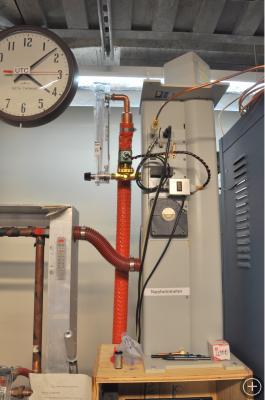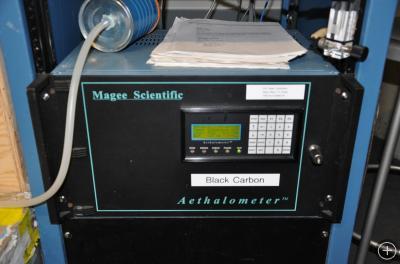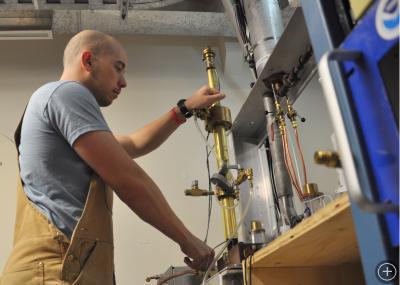Aerosols in the Atmosphere
SOUTH POLE, ANTARCTICA– Several weeks ago, I explained how solar radiation is the main driver of the Earth’s climate in the blog post, “As Sunset Approaches, Let’s Talk Solar Radiation”. When solar radiation passes through the atmosphere and makes its way towards Earth, it can get absorbed, reflected, refracted, or scattered. One of those substances in the atmosphere that can either absorb or scatter solar radiation are aerosols. Aerosols are tiny particles that are light enough such that they are suspended in the air. It is dust more or less. You may be able to see them in large amounts on very dry and windy days where dirt is being picked up into the air, or as you look out over the ocean and see a white haze near the surface of the water. That white haze is salt from the ocean.

Part of the Radiation Budget, pulled from the IPCC Fourth Assessment Report. Source: Kiehl and Trenberth (1997).
Aerosols have different properties depending on what they are made of. Some of those properties that are important are roughness, color, and size. These properties affect what happens to solar radiation as it reacts with the particle such as whether it will scatter or absorb. For example, a particle of black carbon (left over after burning of a fossil fuel let’s say) is going to be much more effective at absorbing solar radiation than a piece of salt that has a much lighter color as well as a shinier surface (shiner, brighter surfaces reflect radiation better). It is also important how they are distributed spatially around the globe and how long they stay in the atmosphere. To think more about the spatial distribution, at the South Pole, we have no vegetation, dirt, salt water, or large sources of combustion anywhere close to us (aside from our own station which is downwind from where we sample). We have extremely low concentrations of aerosols in the air here compared to a sand desert or near a volcanic eruption. The time that they spend in the atmosphere can depend on many things. If it is a large particle, it may settle back to the surface quicker. If it rains, the aerosol may get collected by the raindrops and land back on the surface. Depending on the hygroscopic (the ability for a surface to become wetted or have water stick to it) properties of the aerosol, water can also condense on them to make cloud droplets.
Speaking of cloud droplets, aerosols can indirectly affect solar radiation by being an ingredient for clouds to form. Water likes particular sizes and types of aerosols to condense upon. The name this particular type are Cloud Condensation Nuclei. If there are no Cloud Condensation Nuclei present, the water has nothing to condense onto and there will be no cloud. The size and type of aerosol affect the physical properties of the cloud as well. Therefore a change of aerosols in a region can change the type of cloud, thus changing its radiative properties. This dependency on Condensation Nuclei brings up yet another complicated variable that can affect the radiation budget.
So that explains a little bit why we are so interested about the “dust” in the air. Aerosols have a significant influence on climate processes. Now let’s take a look at the instruments that deal with aerosols at the South Pole.

The Condensation Nucleus Counter (CNC) does basically what its name says. It uses butyl alcohol to create a cloud by cooling the flow of the air through the instrument. Inside is a particle counter that counts how many droplets there are.

The Nephelometer measures the radiation scattering ability of the aerosols. By running air through the instrument and shining a light through the air, we can detect how much of that light is getting scattered with a photomultiplier tube (PMT). There are filters in front of the PMT in order to detect several specific wavelengths of light. If we know the output of light initially, and subtract what is detected, then we know how much light is scattered by the aerosols.

The Aethalometer is an instrument that we use to measure radiation absorbing aerosols. For this instrument, air is passed through a filter where the aerosols will deposit onto. The filter is illuminated by a lamp and there are two photocells that sense the light. One is a reference sensor on a spot of the filter with no aerosols, and the other is sensing where the aerosols where deposited. The difference between these 2 sensors is the amount of light absorbed.

Here I am using the Pollack which is an older instrument that is used to compare to the CNC. It creates a cloud by depressurizing a chamber which causes the air to cool and form a cloud. There is a PMT that detects light and I watch an ammeter to see how much the current goes down when the cloud forms.
Not pictured is the Water-Based Condensation Particle Counter which is very similar to the Condensation Nuclei Counter that is shown above. The laser inside broke during the summer and we were not able to send it to the lab, get it fixed, and get it back to the Pole before station closing.
So that is how we measure aerosol concentrations and their scattering/absorbing properties at the South Pole. The next process that we measure at the South Pole will be the Carbon Cycle and Greenhouse Gas (CCGG) group. We’ll take a look at the CO2 analyzer and the role that greenhouse gases play in the climate.











Sweet Nick! This is really interesting, way to go!